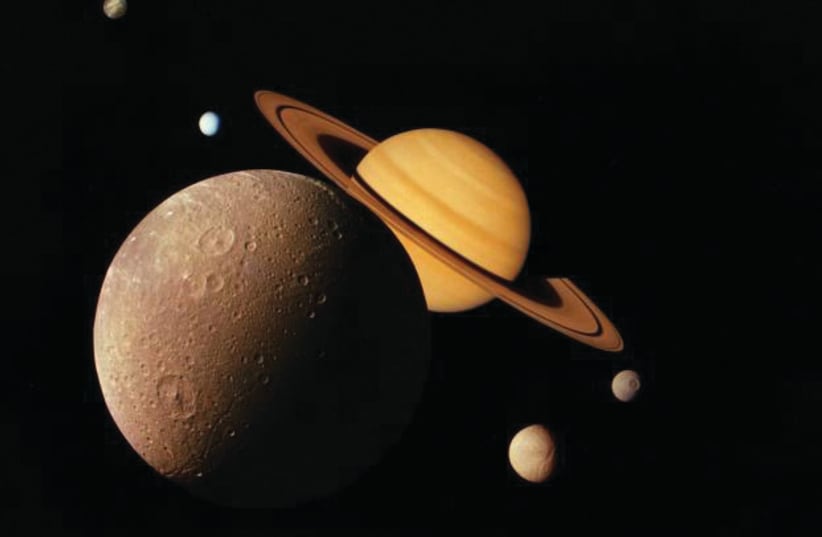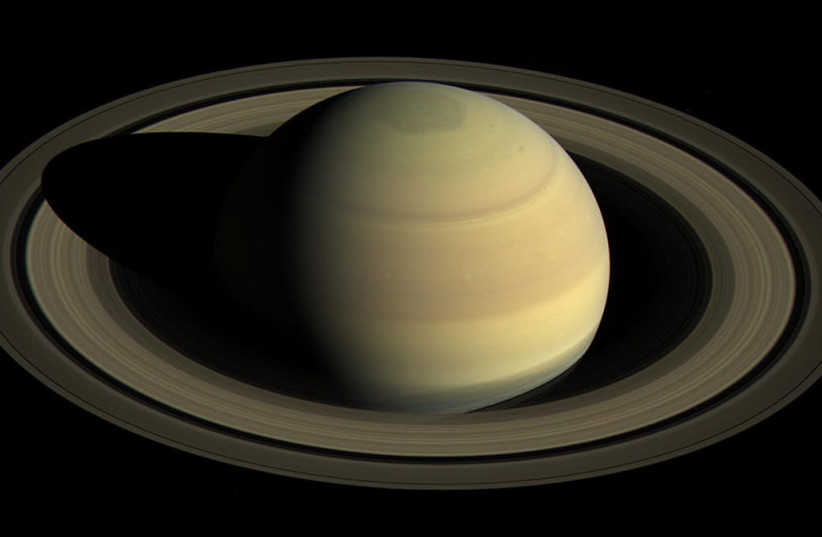How did the planet Saturn get its iconic set of rings? According to a recent academic study, it may have been due to losing one of its many moons.
The findings of this study, published in the peer-reviewed academic journal Science, shed light on the possible origins of one of the solar system's most iconic features.
If you like it then you should have put a ring on it: How Saturn got its rings
The fact that a planet has a series of rings around it isn't too out of the ordinary. While Earth and its closest planetary neighbors, Venus and Mars, all lack any rings whatsoever, this isn't the case for all planets in the solar system. In particular, the four gas giants in our solar system, Jupiter, Saturn, Uranus and Neptune, all have rings.
The rings themselves are just accumulations of rocks, ice and other debris caught in the planet's orbit.
But despite this, not all ring systems are created equal. In particular, Neptune and Jupiter have relatively simple ring systems. But Saturn's rings are far more extensive and complex. They are absolutely enormous, surrounding the entirety of the gas giant - which itself is already a massive gas giant second in size only to Jupiter. And even then, the rings still stretch out tens if not hundreds of thousands of kilometers.
They were first known to have been witnessed all the way back in 1610 by Galileo Galilee, and ever since then, they have been one of the most iconic symbols of space and the greater cosmos.
Despite this, it may be surprising to some that the rings of Saturn aren't that old. At just around 100 million years old, at a cosmic scale, these rings are still relatively young.
For context, sharks have existed in Earth's waters for 400 million years, four times as long as the rings of Saturn have.
So how did something so absolutely massive and complex in size and scope like Saturn's rings form?
Well, there were a few possibilities. Perhaps they were a byproduct of planetary formation, with ice and rock debris getting caught up in the orbit? Maybe an asteroid impact resulted in the formation of a sufficient amount of debris that it formed into the rings?
But these theories don't hold water. This is true for a few reasons, but a big part of it is Saturn's angle.
The rings of Saturn are already evidence that the gas giant spins while tilted, specifically at an angle of 26.7 degrees.
Now, as for why this tilt exists, scientists have theories. Specifically, it is widely thought that it is due to gravitational influence from its neighbor, Neptune.
So how does this matter regarding the formation of Saturn's rings?
Essentially, scientists figured out that yes, Saturn and Neptune once were synchronized, meaning Saturn was trapped in synchronization with Neptune. However, the planet has since escaped. So what happened?
Moons happened.
Saturn, like many planets in the solar system, has a whole host of different moons. In particular, Saturn possesses 83 different moons.
But after parsing through data from NASA's Cassini spacecraft, which was sent to study Saturn and its rings back in 1997, the scientists behind this new study have discovered that Saturn may have in fact once had an 84th moon.
Dubbed "Chrysalis" by the scientists, the study posits that this hypothetical 84th Saturnine moon was one of the many moons drifting along the cosmos alongside Saturn, with its own gravitational influence helping keep its orbit in synch with Neptune's.
Then one day, this stopped working. Most likely, Chrysalis became unstable and came too close to Saturn. The subsequent gravitational pull it experienced resulted in a catastrophic scenario, with the moon being ripped apart.
What was left of the moon then became the rings, the study posits. But this also resulted in Saturn being separated from Neptune's orbit, too, creating the planet we know today.
But how plausible is this? Can a ripped-apart Moon really have enough mass and material to form such a massive ring system? Absolutely.
For instance, consider asteroids. The solar system is filled with well over one million different asteroids, each of varying sizes. Some are just a few meters in size, while others like Ceres are so massive that they are considered minor planets.
But say you combine all the asteroids in the solar system together. How much mass would this newly formed asteroid conglomeration have?
The answer is that according to NASA, Earth's Moon would still be more massive.
Earth's Moon is big in its own right, but in terms of other moons in the solar system, it's far from the biggest. Both Saturn and Jupiter are in possession of moons far larger than Earth's. In fact, the moons of Ganymede (from Jupiter) and Titan (from Saturn) are both bigger than the first planet in the solar system, Mercury.
This means that moon sizes can vary, and it is very possible that this hypothetical moon of Chrysalis was large enough to give Saturn the rings it has today.

